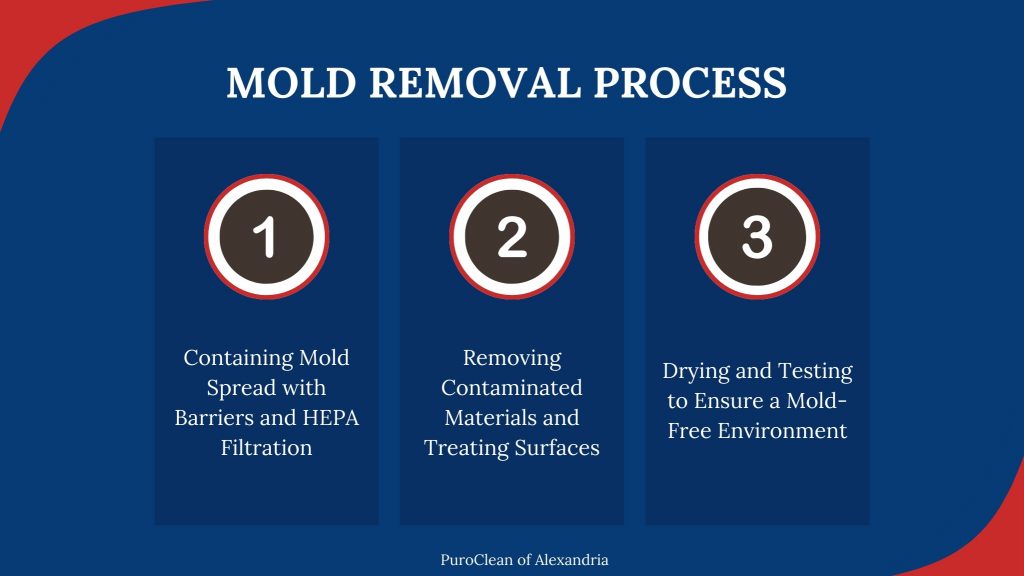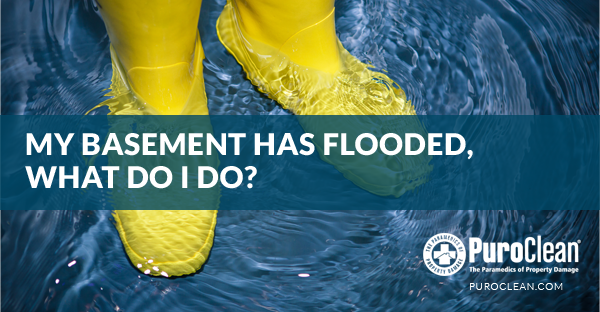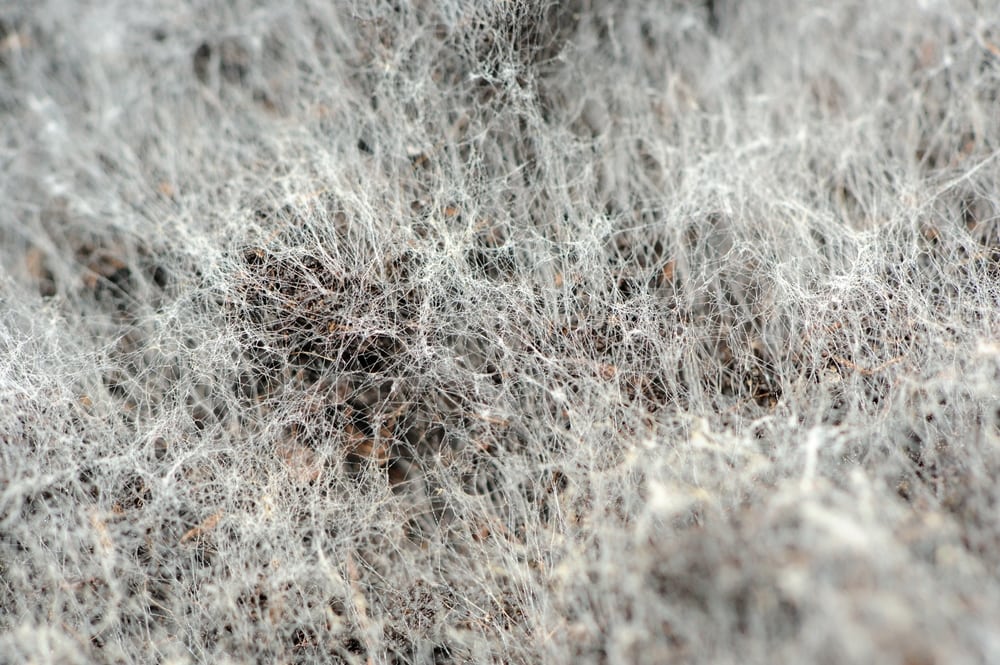Mold is one of those household problems that can sneak up on you. It often starts out of sight and quickly escalates into something much more serious.
Whether it begins with a small leak or poor ventilation, mold has a way of spreading silently and damaging both your home and your health. It’s more than just a cosmetic issue; it’s a serious concern that every Alexandria homeowner should understand and be prepared to deal with. That’s why mold removal Alexandria VA is such an essential service in the area.
This guide will walk you through everything you need to know about spotting, removing, and preventing mold in your home.
Why Mold is a Common Problem in Alexandria Homes
The climate in Alexandria tends to be humid in the warmer months and damp during the winter. That moisture creates an ideal environment for mold to be a recurring problem among homeowners.
Even newer homes aren’t exempt; poorly sealed basements or inadequate attic ventilation can contribute to conditions that mold loves. Combine this with occasional flooding or older plumbing, and it’s easy to see how problems begin.
Ignoring small leaks or lingering moisture can give mold the opportunity it needs to spread undetected.
Spotting Mold Before It Spreads
Mold problems often start quietly. In many cases, it develops in hidden areas—behind walls, under flooring, or inside HVAC systems before showing any visible signs. By the time discoloration or strong odors appear, the mold may already be well established. Homeowners frequently contact mold removal Alexandria VA professionals after discovering dark patches, blotchy stains, or streaks on walls and ceilings.
But not all signs are visual. Bubbling or peeling paint, warped baseboards, and musty, persistent smells can also point to hidden mold. These symptoms often develop gradually, making them easy to dismiss at first. People in the home might also experience increased allergies, headaches, or respiratory irritation, especially in damp or enclosed spaces.
The sooner you recognize the warning signs and take action, the easier and less expensive it is to deal with the issue before it spreads further.
The Mold Removal Process Explained
Before any remediation begins, professionals must identify the moisture source fueling the mold. This could be anything from a leaky pipe to poor attic ventilation. Once the issue is fixed, mold removal Alexandria VA technicians move on to containment and cleanup.
- Containment involves sealing off the affected area with plastic barriers and using negative air pressure to keep spores from spreading. HEPA air scrubbers are set up to filter airborne mold particles throughout the process.
- Next, porous materials like drywall, insulation, or carpeting that can’t be salvaged are carefully removed. Remaining surfaces are scrubbed and treated with EPA-approved antimicrobials to kill any lingering spores.
- The space is then thoroughly dried using commercial dehumidifiers and air movers. Once complete, post-remediation testing is often performed to confirm that the mold has been fully eliminated and the environment is safe again.

DIY vs. Professional Mold Remediation
At first glance, cleaning mold might seem like a manageable DIY task. Surface mold on non-porous materials like tile or glass can often be cleaned with store-bought products and proper safety gear. But when mold penetrates drywall, insulation, or wood, it becomes a much bigger problem. That’s usually when homeowners bring in a mold removal company Alexandria VA to handle the situation effectively.
DIY attempts without proper containment can make things worse. Scrubbing or cutting into moldy materials can release spores into the air, allowing them to spread to other rooms. Without HEPA filtration, protective barriers, and moisture control, the mold often returns, sometimes more aggressively than before.
If the mold covers more than 10 square feet, keeps reappearing, or is in hidden or hard-to-reach areas, calling in professionals is the safer and more reliable solution.
How to Prevent Mold from Returning
Prevention is often overlooked, but it’s key to long-term success. Professionals from a mold removal company Alexandria VA will typically provide guidance after remediation to help keep your home mold-free.
Ventilation improvements, like bathroom fans or attic vents, go a long way. Sealing cracks in foundations, fixing roof leaks quickly, and using dehumidifiers in damp areas can also keep mold at bay. Regularly inspecting trouble areas, especially after heavy rains, adds another layer of protection.
Cost Breakdown and Insurance Coverage
The cost of mold remediation depends on the scope and complexity of the job. Most mold removal Alexandria VA providers offer an upfront inspection to assess the situation.
According to a Forbes article, the average cost of remediation for a 2,000-square-foot home is $5,000, with prices ranging from as low as $500 to as high as $12,500. Insurance may cover it if the mold resulted from a covered event, such as a sudden pipe burst or storm damage. Always check with your insurance provider and ask your contractor for documentation.
Choosing the Right Company
Choosing the right partner for the job matters just as much as the process itself. Look for certifications, insurance, and customer reviews before hiring. A reliable mold removal company Alexandria VA will provide a clear scope of work and offer guarantees.
Ask if they offer post-remediation verification testing, which ensures mold has been eliminated. Also, inquire about their prevention recommendations and what follow-up support is included. A little due diligence upfront can save you time and money later.
Conclusion
Mold is more than just a nuisance; it’s a potential health risk and a threat to your property’s long-term value. Knowing when to act, how to handle it properly, and how to prevent it in the future is essential for every homeowner.
Whether you’re facing a minor outbreak or suspect hidden mold behind the walls, it’s worth taking seriously. Being proactive today can save you from major headaches tomorrow.
If you’re looking for expert guidance and fast, reliable service, you can reach out to trusted local professionals like PuroClean of Alexandria.
FAQ
Q1. Can mold grow in cold temperatures or during winter in Alexandria?
Ans: – Yes, mold can still grow during colder months if moisture is present. While mold prefers warm, humid conditions, it only needs water, organic material, and limited airflow to thrive. If areas in your home stay damp, like a basement or attic, mold can remain active even in the winter.
Q2. Does homeowners’ insurance typically cover mold removal in Alexandria?
Ans: – It depends on the source of the mold. If the mold resulted from a “sudden and accidental” incident, such as a burst pipe, your insurance policy may cover it. However, if it’s due to ongoing neglect or poor maintenance, it’s usually not covered. Always review your policy details or consult your insurance provider.
Q3. Can I stay in my home during professional mold remediation?
Ans: – It depends on the size and location of the mold infestation. For small, contained areas, it might be safe to stay, especially if the remediation is isolated to one room. For larger jobs or when multiple rooms are affected, temporary relocation may be recommended for your health and safety.
Q4. How long does professional mold removal usually take?
Ans: – Most mold removal jobs in residential homes take between 1 to 5 days, depending on the severity and size of the infestation. Additional time may be required for drying and restoration if structural repairs are needed after the mold is removed.
Q5. What is the difference between mold and mildew?
Ans: – Mold and mildew are both types of fungi, but mildew typically grows on flat, moist surfaces and appears as a gray or white powdery film. Mold is usually darker green, black, or brown and tends to grow deeper into walls, fabrics, and wood. Mold is also more damaging and hazardous to health than mildew.




 PuroClean of Alexandria
PuroClean of Alexandria